
focke wulf 189461 viewsThe Focke Wulf 189 was a reconnaissance aircraft which served with the Luftwaffe (German Airforce) during World War II. Only 846 were built.
The 189 was used mainly on the Eastern Front and was known both as ‘The Flying Eye’, due to the superb all-round vision afforded by its distinctively glazed fuselage, and as the Uhu (Owl). The 189C was an attempt by Focke Wulf to build a ground attack version of it's successful recon plane.
    
(11 votes)
|
|
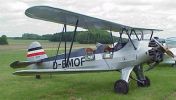
Focke-Wulf Fw 44456 viewsThe Focke-Wulf Fw 44 was a two-seater biplane known as the Stieglitz (Goldfinch).
It was produced by Focke-Wulf for pilot training and aerobatics. The Luftwaffe used the Fw 44C - the final version - almost universally as a trainer during World War II.
    
(8 votes)
|
|
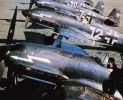
Heinkel He 100521 viewsDisappointed by the loss of the Luftwaffe's fighter orders to BFW and it's Bf 109 and the failure of the He 112, Heinkel set out to build a lighter and faster fighter that was also cheaper and easier to build. Even though the He 100 broke several world speed records, the RLM was solidly supportive of the Bf 109 and failed to order the He 100 into production. Six prototypes were eventually sold to the Soviet Union and three He 100D-0 went to Japan. The three He 100D-0's being armed with two MG 17 and a 20mm MG/FF. The remaining 12 He 100D-1 fighters were used to form a Heinkel-Rostock factory defense unit    
(12 votes)
|
|
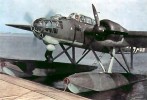
Heinkel He 115486 viewsThe He 115, constructed as a twin engine plane was very effective in it's role as mine-layer and torpedo-bomber (first flight in 1936).
In 1940 the He 115B saw service as a mine-layer, carrying a single magnetic mine of 920 kg. Airplanes of Küstenfliegergruppe 106 und 406 flew on a regularly basis mining missions at the east and south coast of Great Britain. At the end of 1940 the He 115 C appeared with heavy armament; a subversion had improved skids for landings on ice and iced snow. The C-4 was a version specialised for torpedo-attacks, which was used several times against the north-cape convoys.     
(15 votes)
|
|
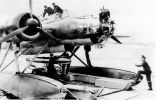
Heinkel He 115492 viewsThe He 115, constructed as a twin engine plane was very effective in it's role as mine-layer and torpedo-bomber (first flight in 1936).
In 1940 the He 115B saw service as a mine-layer, carrying a single magnetic mine of 920 kg. Airplanes of Küstenfliegergruppe 106 und 406 flew on a regularly basis mining missions at the east and south coast of Great Britain. At the end of 1940 the He 115 C appeared with heavy armament; a subversion had improved skids for landings on ice and iced snow. The C-4 was a version specialised for torpedo-attacks, which was used several times against the north-cape convoys.     
(13 votes)
|
|
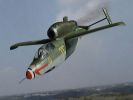
Heinkel He 162618 viewsThe Heinkel He 162 Volksjäger was the second jet engined fighter aircraft to be fielded by the Luftwaffe in WWII. It is know primarily for a series of spectacular disasters during testing. Nevertheless the ambitious production program continued and 300 were complete by the war's end, with another 100 ready for delivery. Only one gruppen had completely re-formed with the He 162 in late April, and they claimed two or three planes in combat before their base was taken over by the British in early May.    
(13 votes)
|
|
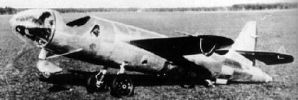
Heinkel He 176695 viewswas the world’s first aircraft to be propelled solely by a liquid-fuelled rocket, making its first powered flight on July 20 1939 with Erich Warsitz at the controls. The He 176 was built to utilise one of the new Walter engines. It was a tiny, simple aircraft, built almost entirely out of wood and lacking even an enclosed canopy. It had a conventional, fixed, tricycle undercarriage, but relied on the weight of the pilot to actually rest on its wheels. Empty, the tail of the plane rested on the ground. Heinkel demonstrated the aircraft to the RLM, but official disinterest led to the abandonment of the company's rocket propulsion programme. The He 176 was placed in the Deutsches Technikmuseum ("German Technical Museum") in Berlin, where it was destroyed in an air raid during World War II.    
(11 votes)
|
|
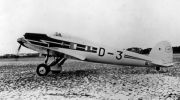
Heinkel He 70516 viewsThe Heinkel He 70 was an aircraft designed as a fast mailplane, inspired by the Lockheed Orion. Its streamlining inspired many other designs. Although useful, it had a relatively brief commercial career, before it was replaced by types which could carry more passengers. As a combat aircraft it was a not a great success, because it rapidly became outdated.     
(10 votes)
|
|
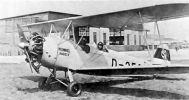
Heinkel He 72516 viewsThe Kadett was introduced in the Luftwaffe in 1933, when the latter was not yet official. It remained one of the most wideley used German primary trainers until 1944. Although it lacked power, it was a pleasant plane to fly and quite comparable to the British Tiger Moth.
Almost all Kadett were He 72B, of which the prodcution took place from 1934 until 1936. After that, only models with a limited number of examples remained in production (He 72BW, He 72B-3). A single example was tested by the Japanese Navy as the "KXHe1"
    
(15 votes)
|
|
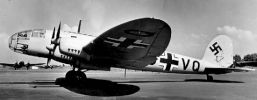
Heinkel He 116488 viewsThis aircraft was designed in 1936 as a high altitude aircraft for Lufthansa. The specified Hirth powerplants were not available and the V1 flew in 1937 on lower rated engines. Eight A-series mail carriers were built followed by the He 116R with rocket boost. The He 116R later flew 6,214 (10,000km) on June 30, 1938 non-stop. Six B-0 were delivered to the Luftwaffe in 1938 as long range photo recon aircraft but their low speed, lack of pressurization and lack of armament made them too vulnerable to use in enemy airspace and these airframes spent the remainder of their careers doing photographic work over Germany.    
(11 votes)
|
|
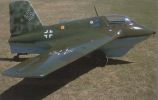
Messerschmitt Me 163B-1440 viewsAlthough the aircraft's two MK 108 30mm cannons were capable of downing a four-engine bomber with only three or four hits, the Komet's high speed, coupled with the cannons' slow rate of fire and short range made effective gunnery nearly impossible against the slow moving bombers. As a result, Me 163 pilots recorded a total of only nine kills. Although capable of reaching its service ceiling of 12,100 m (39,690 ft) in just under three-and-a-half minutes, the Me 163 carried only enough fuel for eight minutes of powered flight. An improved variant of the aircraft with a greater endurance and a tricycle landing gear, designated the Me 163 C, was also produced in small numbers before the war's end, but was not flown operationally.
    
(11 votes)
|
|
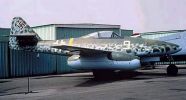
Messerschmitt Me 262 Schwalbe490 viewsThe Me 262A-1a "Schwalbe" ("Swallow") was the first production model of the Me 262. It was produced with four Mk 108 30mm cannon mounted in the nose, in its role as an interceptor, a role that it performed with great promise. it came into the battle far too late, when the Allied air forces had reached formidable capacity; secondly, its engines were a constant source of trouble, frequently failing after no more than 12 hours; the Me 262A-2a "Sturmvogel" ("Stormbird") was reconfigured to carry two 550lb bombs, still retaining the four cannon. A further refinement, Me 262A-2a/U1 had two of the cannon removed to provide space for a bomb-aiming device, and Me 262A-2/U2 carried a prone bombardier in the nose section. Thus, for much of the aircraft's brief combat life, it was used against the wrong type of targets, with even less effect than if it had been used as an interceptor.
    
(15 votes)
|
|
|
|